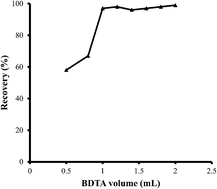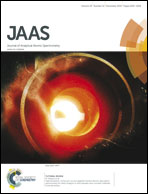GFAAS determination of gold with ionic liquid, ion pair based and ultrasound-assisted dispersive liquid–liquid microextraction
Abstract
A new and green extraction method has been developed for the preconcentration of ultra-trace amounts of gold before determination by graphite furnace atomic absorption spectrometry. The preconcentration of gold is based on ionic liquid ion pair formation and ultrasound-assisted emulsification-dispersive liquid–liquid microextraction. The ion pair formed between AuCl4− and benzyldimethyltetradecyl ammonium chloride dihydrate in a microliter-range volume of 1-hexyl-3-methylimidazolium hexafluorophosphate was preconcentrated and a number of factors affecting the formation of the ion pair and the efficiency of the microextraction were investigated and optimized. The following results were obtained under the optimum conditions: an enrichment factor of 123, a precision of ±4.2%, a linear calibration range between 8.0 and 320 ng L−1 and a detection limit of 2.0 ng L−1 in the original solution. The method was successfully applied to the determination of gold in hair and water samples and in a certified reference material.


 Please wait while we load your content...
Please wait while we load your content...